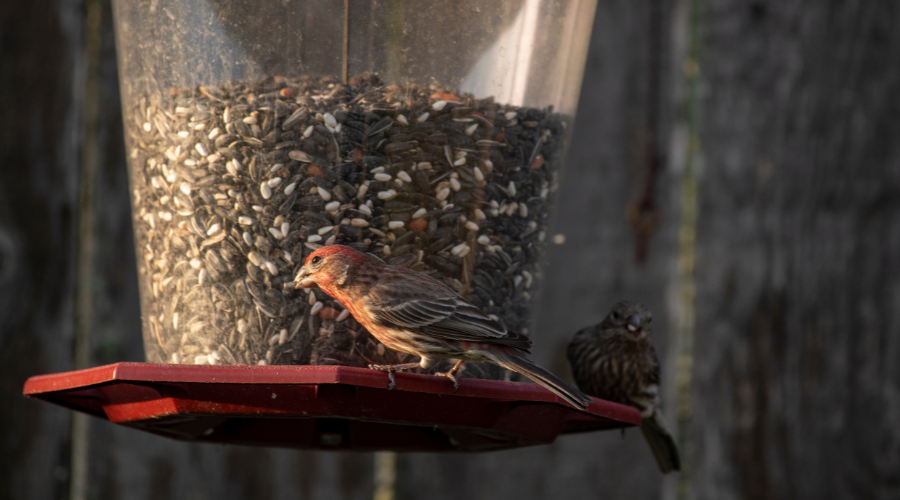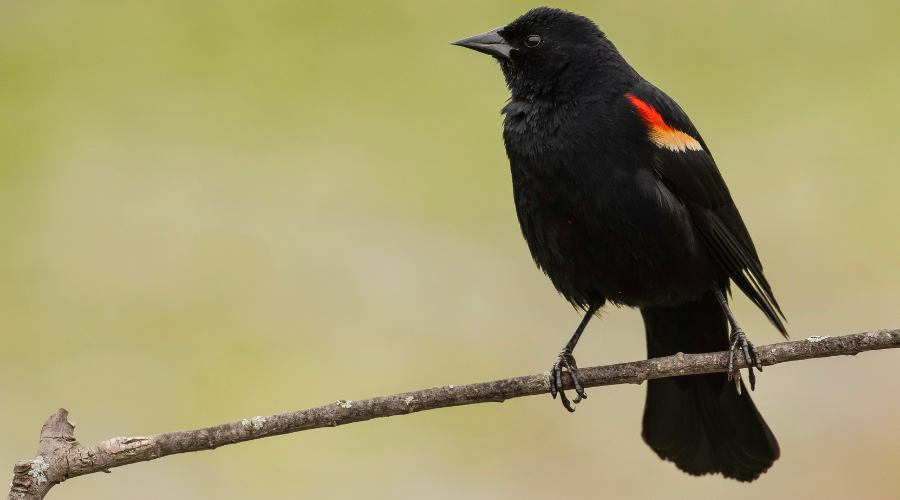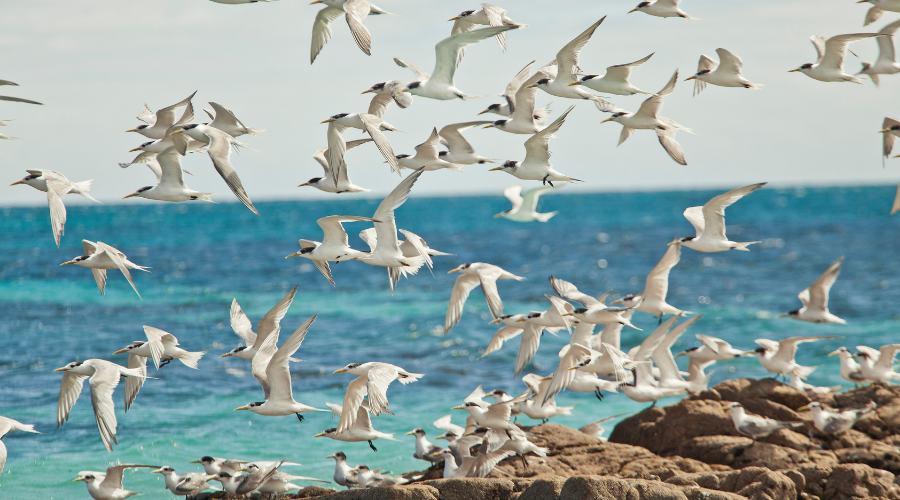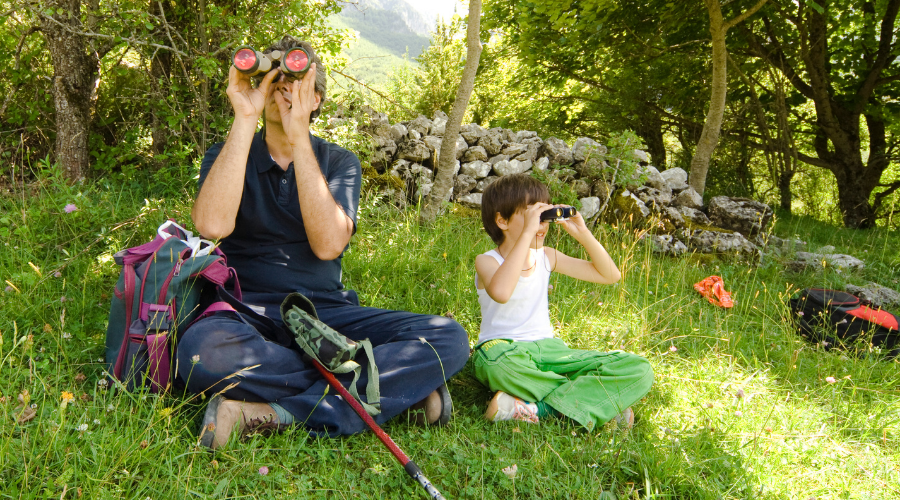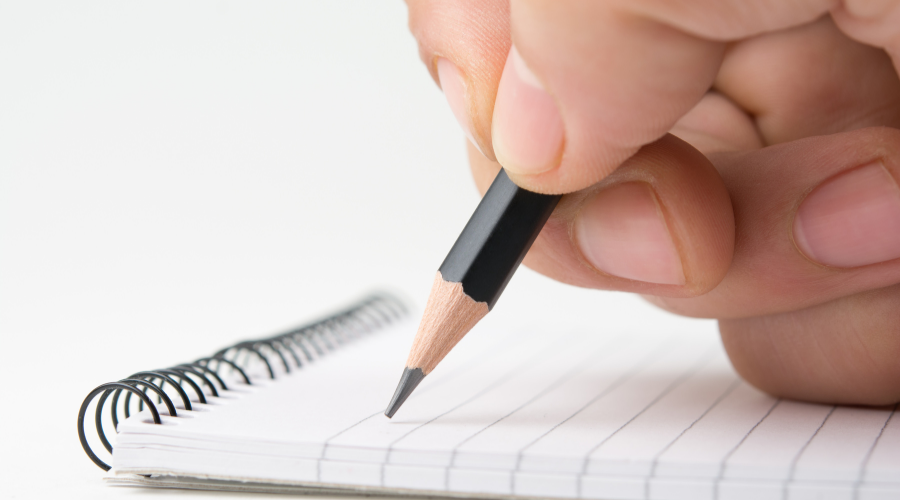Since long before I was born my father has been a birder. An ornithologist for those of you who like big words. Before I could read we would page through bird books together and he’d test my knowledge.
When I learned how to read I could just read the names off the page and the testing fell away. But the result is still apparent; I know the difference between a sparrow and a swift. So settle in for a list of tips and tricks on how to get started with birdwatching.
1. Start With What’s Around You
Image credits: Karen Janczak via Canva
The best place to start is in your own backyard. Go outside and pay attention to what birds you see most often. Learn their names, their identifying characteristics, and the sounds they make. Take it a step further by learning how to attract birds to your backyard.
2. Listen
Image credits: PeopleImages via Canva
When you go outside you might not see a bird straight away. But I’m sure you’ll be able to hear a few. Try to single out different calls from different sounds. Some birds duet, so one call might come from two different birds that are dueting. You won’t be able to identify each bird right away, but it’s all part of building that knowledge.
3. Get A Bird Book Of Local Birds
Image credits: C Technical from Pexels via Canva
You’ll need help identifying what’s around you. Get a bird book that focuses on the local birds in your area. This helps you with tip number 1 & 2.
4. Learn How To Identify Birds
Image credits: Ayman Haykal via Canva
There are certain things you need to focus on when trying to identify birds. The color, the markings, the color under the wing, the color of the beak and feet, the shape of the beak, the shape of the tail, etc. If you know what identifiers to look for it will make your life so much easier.
5. Get Yourself Some Binoculars
Image credits: StockSnap from Pixabay( via Canva
You can’t call yourself a birder without some binoculars. Even if all the birds you’re looking at are close by, a pair of binoculars will help you single out the identifying markers.
6. Spend Time In Nature
Image credits: bernardbodo via Canva
If you have access to nature, find a spot to sit and be quiet for a few minutes. You’ll be amazed at how quickly the birds will come to you.
7. Attract Seed Eating Birds
Image credits: Oldiefan from Pixabay via Canva
Birds eat a bunch of different things. Throw some bird seed on your lawn or set up a feeder within view of your home. Seed eaters have short, stout bills. Try to notice which ones you see most frequently and learn to identify them.
8. Attract Fruit Eating Birds
Image credits: momnoi via Canva
Similar to the step above, except place fruit in the feeder instead of seed. You’ll see a different crowd of birds show up to this buffet.
9. Attract Insect Eating Birds
Image credits: <a href="Image credits: via Canva" target="_blank" rel="nofollow noopener">Jacobmccaffery via Canva
This one isn’t as straightforward as the two above. You could place grubs or something similar in a feeder if you’re willing to go to this extent. Otherwise plant pollinator and insect friendly plants that will attract the insects that these birds will feed on. Once again, notice the regulars and learn to identify them.
10. Plant A Bird-Friendly Garden
Image credits: Sloot via Canva
Planting a bird-friendly garden is a sure way to attract a bunch of birds that you can learn to identify. Native birds usually seek out native plants, so a garden full of native plants should do the trick. It would also be useful to know the most common backyard birds.
11. Water For Everyone
Image credits: blende12 from Pixabay via Canva
Like most humans, birds love a good bath. Place a shallow dish of water out in the garden for birds to rinse off. Place it on a raised platform with a clear flight path to the water. Please remember to add some pebbles around the outside so that thirsty pollinators can also have a drink without drowning.
12. Join A Club
Image credits: stanfair via Canva
Have a look if there’s a local birding club in your area and consider joining. There’s nothing like an experienced birder to speed up the learning process.
13. Download An App
Image credits: Giftpundits.com from Pexels via Canva
It’s 2022. There’s an app for everything. Download a birding app to help you identify all those birds you’re attracting to your garden. This is where joining a club is helpful, since they’ll be able to tell you what app has the most coverage in your area.
14. Go To The Birds
Image credits: julija88 via Canva
Attracting the birds to you is a good way to get going. But once you understand how to identify birds, it’s time to go where there’s higher concentration of birds. Anywhere in nature is a good bet, although there might be a mass swallow nesting sight in your area or an area that’s well known for birds of prey. Learn local knowledge and get scouting.
15. Visit A Bird Hide
Image credits: hanshgmb via Canva
Bird hides are surprisingly common. Google bird hides in your area and spend some time hanging out in one. An added bonus is that most hides will have information on what birds you are most likely to see from that hide.
16. Go To The Water
Image credits: bananaman via Canva
There’s a whole different crowd of birds that will show up to natural bodies of water. Sea birds love the beach and there’s a plethora of water birds that frequent other natural bodies of water. Seeks these out and get identifying.
17. Find A Birding Buddy
Image credits: Angelafoto via Canva
Try and convince a friend to get into birding with you. This will give you the motivation to keep at it. If you join a club it would be a good idea to partner up with someone at the same skill level as you so that you push each other to learn more.
18. Take Notes
Image credits: arsenisspyros via Canva
If you see a new bird, note down the different things you could use to identify it. These notes will come in handy later when you have the resources to identify it. This will also train your eye to pick out the things you should be looking for when you see a bird.
19. Set Up A Perch
Image credits: Terry Sperling via Canva
Birds of prey are something special. They need a high perch that they can use to hunt from. Consider leaving that dead tree in your yard (as long as it’s safe) for the birds of prey to use. When you’re lucky enough to spot a bird of prey on the perch, note down the identifiers for use later on.
20. Set Up An Owl Box
Image credits: passion4nature via Canva
Owl’s like specific places for their nesting sites. An owl box mimics these sites to attract local owls. It’s important to get your owl box from a local who knows what they’re doing because not all owls want the same conditions for their nests.
21. Take Photos
Image credits: Ruskov via Canva
If you have a nice camera with a long lens, taking photos of birds you see is an invaluable resource for identifying the birds at a later stage.
22. Learn Migration Patterns
Image credits: to_csa via Canva
Birds migrate. My father will be able to tell you when, to the day, the Fiery-Necked Nightjar should start singing it’s haunting song during the crepuscular hour. It’s extra satisfying when you know that certain birds have arrived safely from their long, intercontinental trip.
23. Have Fun
Image credits: Jupiterimages via Canva
The most important step of all. Birding is all about getting out into nature and having fun. Being able to identify common and rare species alike is just a bonus.
Sit back and watch
By following the tips and tricks above you'll learn how to identify birds in no time. By starting where you are you'll be able to build up the habit of looking for the right elements that will allow you to identify the birds around you. Don't worry about identifying the birds as you see it, rather take note of the birds identifying features while you have it in your site and then use these features to identify the bird when you have the resources.


